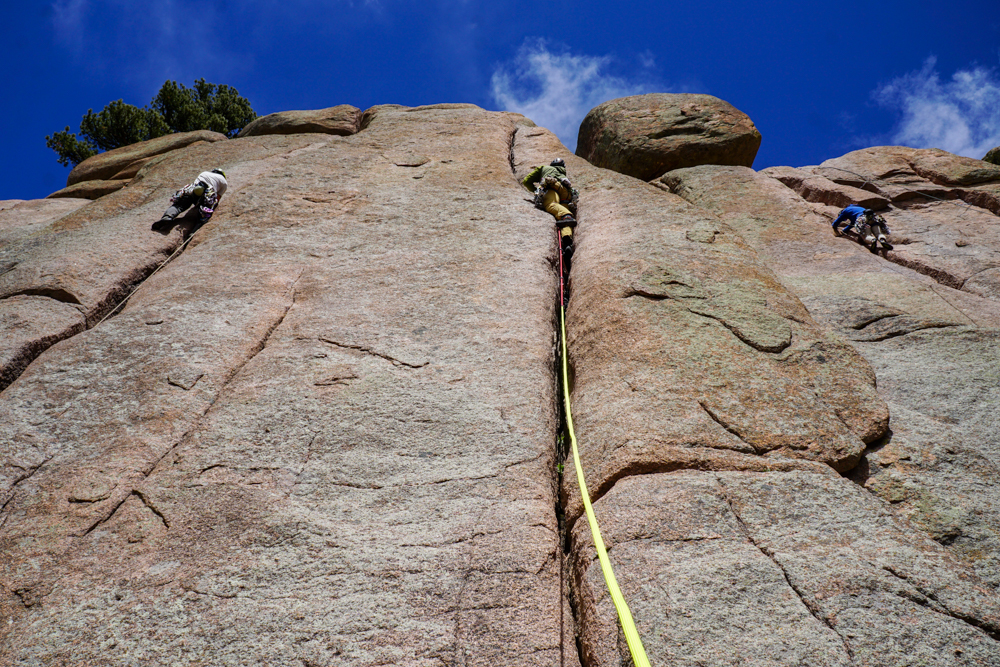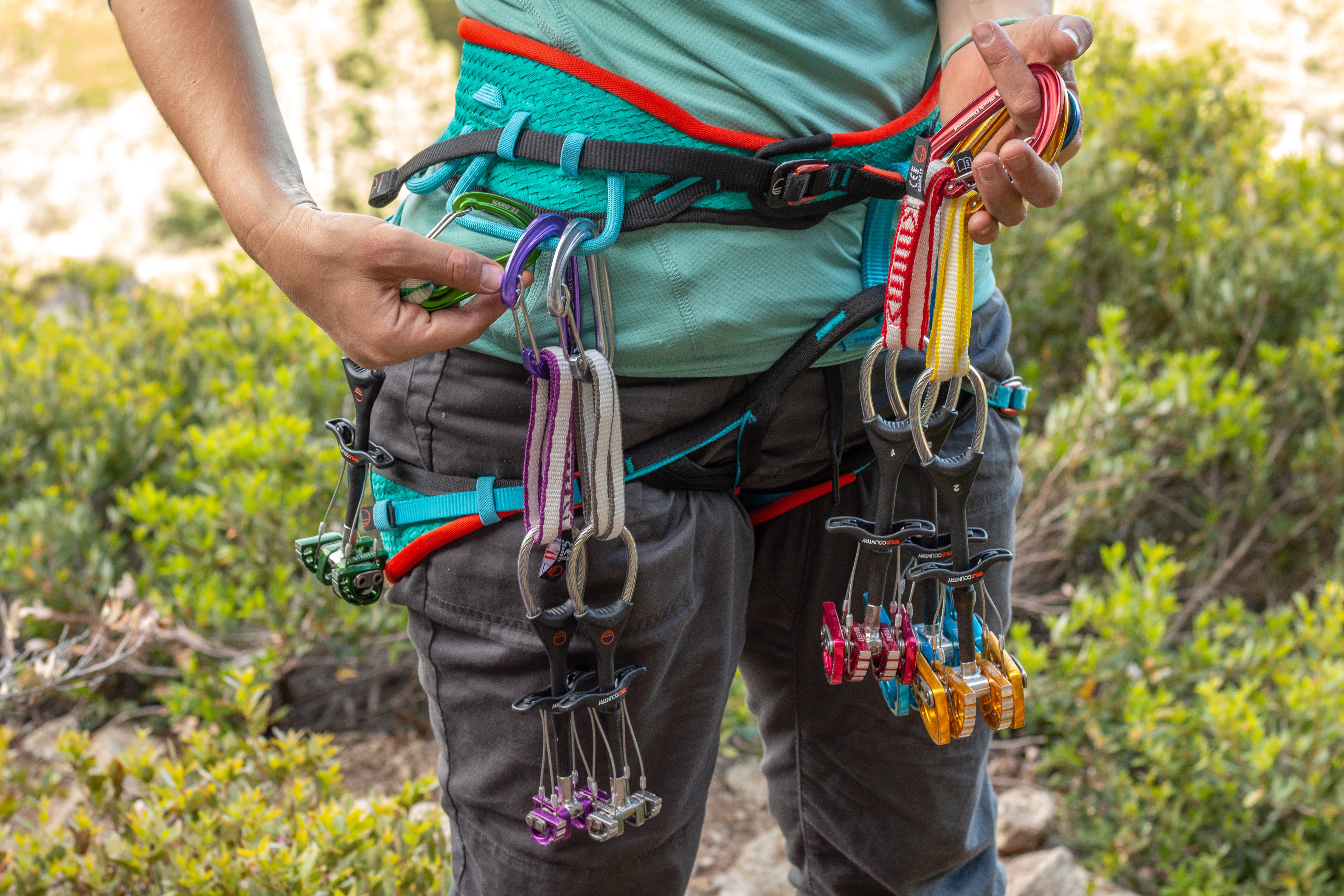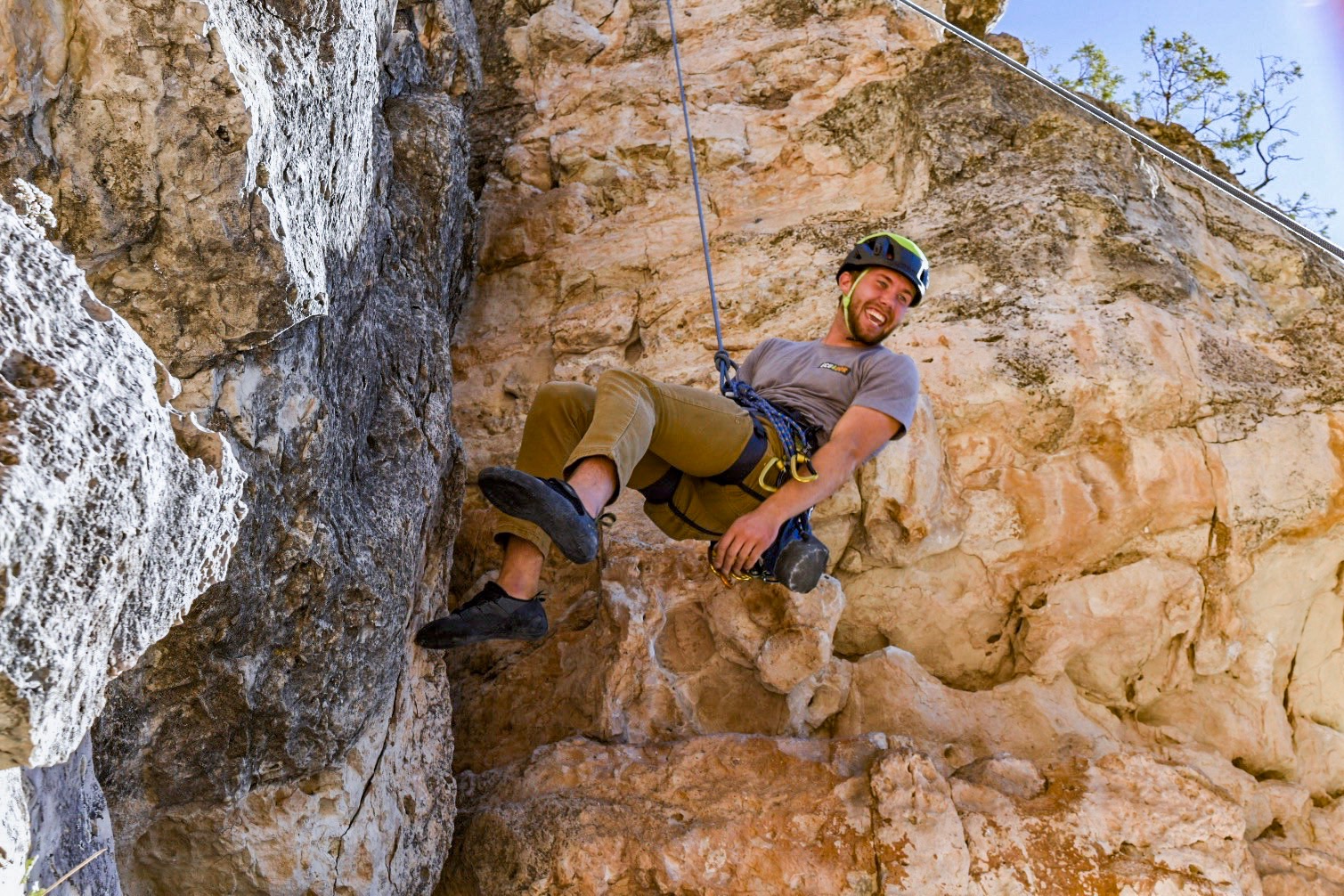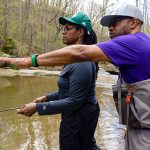Climbing Lingo 101
We’ve all been there…chatting with someone about what adventures they got into last weekend, intently listening to the play-by-play. Then they start getting into the details and suddenly don’t have the ability to follow. An ATC? You free solo’ed what? Living in Colorado, I am surrounded by so many adventurous people partaking in a myriad of niche sports. This situation happens to me quite often.
Whether it’s rafting, mountaineering, biking, or climbing, some are lucky to be raised and taught about these adventurous hobbies growing up, or had a friend or mentor take them under their wing to teach them the ropes. But it’s no secret that these activities include quite a bit of knowledge (and jargon!). To keep safe, and keep up, you’ve got to know the lingo.
Working in the outdoor industry, I have learned about gear I’ve never heard of, activities I could have never imagined, and everything in between. I still have a lot to learn. Rock climbing is one of those activities where I sometimes feel myself getting lost in all of the jargon. To help all those ‘non-climbers’ out there — or those who are just beginning to get into climbing, we have compiled a list of climbing lingo and their definitions. Please, enjoy, and ask questions if you have them!

The Basics
Crag (n): The venue that one climbs at.
“Sometimes I barely climb…mostly I’m just hanging at the crag.”
Route (n): A path by which a climber reaches the top of a mountain or rock.
Beta (n): Information or tips on a route (which holds to use, how to position your body).
“I wasn’t feeling 100% about climbing this new route, but thankfully got the beta from my buddy.”
Belay (n): The secure system a climber uses to safely ascend and descend. This works by doling out or drawing in rope, often through a braking device. Allows the belayer to “catch” a climbers potential fall.
- ATC (Air Traffic Controller — a semi joke made by Black Diamond because you’re ‘controlling’ the person in the air) (n): A popular tube-style belay device invented by Black Diamond. Many other companies have since mimicked the design.
- Grigri (n): A popular assisted braking (belay) device designed to catch a climber’s fall made by Petzl.
Lead (n): The initial climber who goes up first to secure the rope for other climbers.
Send (v): Successfully completing a route.
“You super sent it on that lead climb, you’re a rockstar!”
Project (n): A specific route a climber is actively working on completing. Typically when a climber is working on leveling-up to a more advanced climb.
Passive vs active gear
- Passive (adj): Describing gear that does not have moving parts (nuts, stoppers, bolts, hanger). Typically these steel pieces are permanently placed into a rock to assist climbers.
- Active (adj): Describing gear that can be adjusted to fit into cracks and crevices. The camalots (aka cams) are the staple active gear.

Bouldering (v): To climb without ropes, typically close to ground.
Highballing (v): A type of bouldering that is very high off the ground. A fall during this type of climbing would most likely result in an injury.
“Bouldering is so lame…highballing is where it’s at!”
Free solo vs free climbing vs aid climbing
- Free solo climbing (v): Climbing with no ropes or gear. This type of climbing is just between the climber and the rock. The only gear necessary are shoes and chalk.
“Do you even free solo, bro?”
- Free climbing (v): Climbing with gear for safety, but the climber only relies on hands or feet for upward progress.
- Aid climbing (v): Actively using gear to assist in upward progress.
Trad (aka Traditional) Climbing (v): A type of climbing where the climber brings all necessary gear with them to get to the top of the route. There is no fixed hardwear previously placed on the route for aid. Camsare necessary to ascend cracks and crevices.
Trad rack (n): Used when trad climbing to bring all of the necessary gear and cams with you up the route so that you have proper anchor points for safety.

Sport climbing (v): A type of climbing where there are bolts and/or fixed points along the route. Typically the climber is only going up with a harness, quickdraws, and rope. Compared to trad climbing, sport climbing is more accessible and cheaper.
Advanced
Chuffer (n): Derogatory term used for someone with sloppy footwork.
“Look at that chuffer over there, he looks like he’s breakdancing on the wall!”
Zipper (n): When a climber falls on lead (typically during trad climbing) and the anchors pull out in sequence from bottom to top because they are pulled in an unplanned direction. Zippers are typically avoided altogether by making the first anchor above the belayer solid against upward pulls.
Jam (v): When a climber uses their appendages (fingers, hands, or feet) in a crack to hold themselves up or for upward progress.
Onsight (v): Completing a route without any previous information or review. In this instance, a climber hasn’t seen photos or heard anything about the route before they attempt the climb.
Flash (v): Completing a route on the first try without having ever attempted the climb before. In this instance, the climber could’ve seen photos or a video about the route or been told about it before.
Redpoint (v): Completing a route that the climber has attempted before.
“I’ve been working on this project for weeks now…time to redpoint it!”

Miscellaneous
Elvis leg (n): An uncontrollable sensation causing shaking in a climber’s leg. Typically caused from fear and/or fatigue.
“It’s a newbie climber’s right of passage to get elvis leg fairly often.”
Hangdog (v): When a climber rests on their rope, usually when they’re tired.
Take (v): When a climber is on a route and gets tired, the belayer pulls the slack out of the rope so the climber can hang-dog.
Pumped (adj): General term when a climber has too much fatigue in their arms and they are unable to hold on to the wall any longer.
Hang board (n): A training device that helps climbers strengthen hands and fingers.
Flapper (n): A flapping piece of skin hanging off a climbing’s finger or hand. Typically sustained on sharp rock, rough holds, or prolonged use.
“I sent way too hard and now I’ve got a flapper.”
Whipper (n): When the lead climber takes a fall once they are above the last bolt they clipped into.
“Did you see that guy take that massive whipper?”
And there you have it…(hopefully) enough jargon and definitions to help you understand what your bestie is talking about after their weekend of sport climbing and sending projects. Hopefully they didn’t get too many elvis legs and flappers. They may have been pumped and needed to hangdog a few times, but that’s okay! They just started climbing and one day they’ll certainly be sending on-sites and leading routes.
Without a doubt, there is more climbing jargon that we missed. What’s your favorite climbing word? Leave a comment below and let us know!
About the Gear Tester
Kelly Knauf leads the marketing team at Outdoor Prolink. She is a mountain lover, outdoor enthusiast, and professional snack packer. By day she answers emails and writes content, by night she's plotting her next camping trip or snowboarding adventure.













Great job, Kelly, thanks! I’d take some small issue on a few points, IMHO, since the intended audience is the beginner/novice. A Grigri should be described as an assisted braking (belay) device, NOT an auto-locking belay device, to discourage any misunderstanding that it can be used hands-free. Zipper – well, kind of, but rather than blaming any old force from a fall, much to the horror of a beginner/novice, a zipper happens when the anchors pull out in sequence from bottom to top because they are pulled in an unplanned direction. Thankfully/hopefully/usually at least the top piece holds. Zippers are typically avoided altogether by making the first anchor above the belayer solid against upward pulls. Finally, probably just a typo, but for “Take,” the belayER, not the belay, pulls the slack out of the rope. Hope this helps!
Larry! Thanks so much for your suggestions 🙂 I’m (clearly) still learning all of the verbiage and really appreciate you chiming in. I made some adjustments to the piece to make sure everything was accurate! Cheers 🙂